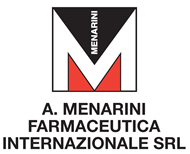• The gel should be used with caution in patients with reduced heart, liver or renal function: isolated cases of systemic adverse reactions affecting renal function have been reported.
• The topical use of large amounts of product may give rise to systemic effects such as hypersensitivity and asthma.
• The treatment should be interrupted if rash appears.
• The recommended length of treatment should not be exceeded due to the risk of developing contact dermatitis and photosensitivity reactions increases over time.
• Hands should be washed thoroughly after each application of the product.
• Treatment should be discontinued immediately upon development of any skin reaction including cutaneous reactions after co-application of octocrylene containing products.
• It is recommended to avoid exposure of treated skin to direct sunlight including solarium (sunbeds), and to protect treated areas by wearing clothing during treatment with the product and for two weeks following its discontinuation to avoid the risk of photosensitisation.
• Do not use with occlusive dressings.
• The gel must not come into contact with mucous membranes and with the eyes.
• Patients with asthma combined with chronic rhinitis, chronic sinusitis, and/or nasal polyposis have a higher risk of allergy to aspirin and/or NSAIDs than the rest of the population.
• The use of topical products, especially if it is prolonged, may give rise to phenomena of sensitisation or local irritation.
• The excipients citral, citronellols, coumarin, farnesol, geraniol, d-limonene and linalool may cause allergic reactions.
• Ethanol may cause a burning sensation on damaged skin.



